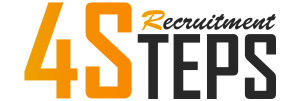How to Calculate Cost of Goods Manufactured

In order to help you advance your career, CFI has compiled many resources to assist you along the path. For more resources, check out our business templates library to download numerous free Excel modeling, PowerPoint presentation, and Word document templates. This insights and his love for researching SaaS products enables him to provide in-depth, fact-based software reviews to enable software buyers make better decisions.

This is your chance to grow your business, increase earnings, and improve the efficiency of the entire production process. It is important to take into account both the starting and end balances, much like with raw material and work in process inventories. Financial analysts and business executives use COGM to determine whether a company’s products are lucrative enough to continue selling them or whether a supply chain adjustment would be required to save costs.
Calculating the Direct Materials a Company Uses
In addition, more capable solutions have built-in integrations with financial software such as Xero or Quickbooks, enabling automation of financial data and hugely simplifying purchase and sales order management. Essentially, COGS is to finished goods inventory what COGM is to WIP inventory. The Cost of Goods Manufactured (COGM) represents the total costs incurred in the process of converting raw material into finished goods.

Products and services that have been fully finished and are prepared for sale to clients make up the inventory of finished goods. Once all the calculations necessary to determine the Cost of Goods Manufactured for a year have been completed, the Cost of Goods Manufactured is estimated and then recorded in the Finished Goods Inventory account. This pertains to salaries, bonuses, commissions, and additional benefits of employment. Any partially finished inventory that is not yet marketable—that is, not yet transformed into finished goods that can be sold to customers—is referred to as WIP.
What are indirect materials in COGM?
Furthermore, it offers an exact comparison of production activities from year to year. It will be feasible to plan for resource usage and volume production over time. In today’s guide, we’ll learn everything about Cost of Goods Manufactured (COGM), its calculation, and related concepts. Let’s take a look at the table of content below before we dive into this guide. The cost of goods manufactured (COGM) is calculated by taking into account each of these areas. And as a result, the cost of goods made (COGM) is an important figure, particularly for manufacturing firms.
- The work-in-process inventory includes all products that are not yet finished or ready to be sold.
- Deskera Books enables you to manage your accounts and finances more effectively.
- Note that COGM is also known as the cost of goods produced or the cost of goods finished by some specialists.
- Deskera People is a simple tool for taking control of your human resource management functions.
- You want to ensure that you’re making a profit, but you also don’t want to price yourself out of the market.
Deskera CRM is a strong solution that manages your sales and assists you in closing agreements quickly. It not only allows you to do critical duties such as lead generation via email, but it also provides you with a comprehensive view of your sales funnel. Don’t forget to take employee payment agreements and overtime expenses into consideration. Management can evaluate each component of the COGM formula when it is fully aware of what a company is generating. Note that COGM is also known as the cost of goods produced or the cost of goods finished by some specialists.
Formula
While accountants can approximate its value at the end of fiscal periods, modern inventory and manufacturing software calculates COGM in real-time, based on actual manufacturing data. Direct materials are all the raw materials that are used in the creation of the products. For example, in a guitar company, direct materials would likely include both wood and guitar strings used in the finished product (the guitar). The raw materials inventory is just the materials in inventory that are being stored until they are ready to be used in the production process.
- An example of this would be a company that has sales of 500,000 and Cost of Goods Sold of 375,000.
- By understanding, measuring, and logging COGM, you can keep an eye on the wellbeing of your business.
- Cost of Goods Manufactured (COGM) is a term used in managerial accounting that refers to a schedule or statement that shows the total production costs for the company during a specific period of time.
- Further, this inventory and the COGM value can be used by businesses to determine their cost of goods sold.
- Suppose a manufacturer is attempting to calculate its cost of goods manufactured (COGM) for 2021, its most recent fiscal year.
Just like the name implies, COGM is the total cost incurred to manufacture products and transfer them into finished goods inventory for retail sale. These costs include direct materials, direct labor, and manufacturing overhead of the products that are transferred from the manufacturing department to the finished goods inventory. Cost of Goods Manufactured (COGM) is a term used in managerial accounting that refers to a schedule or statement that shows the total production costs for the company during a specific period of time. COGM is the total cost incurred to manufacture products and transfer them into finished goods inventory for actual retail. Direct labor refers to an organization’s labor cost in preparing, assembling, and manufacturing its goods with raw materials.
Does COGS include the cost of goods manufactured?
If so, the standard cost of each unit sold and scrapped in the period is aggregated to arrive at the cost of goods sold. You can reduce the number of raw materials you use in manufacturing your products without reducing or compromising their quality. Materials such as packaging and documentation costs should be at the barest minimum. The cost of goods manufactured is included in a company’s income statement, usually together with the beginning and ending finished goods inventories. COGS represents the expenses that a company incurs on the products it sells during a specific time period. This figure does not include all cogm or only COGM, but its calculation depends heavily on it.
- The ending WIP, on the other hand, comprises the remaining manufacturing costs after deducting the value of goods finished within the period.
- Making sense of COGM and having efficient systems to measure and track them is critical to your survival as a manufacturing business.
- How much profit a corporation makes is based on the difference between its costs and revenues.
- By following the simple steps and formula provided in this article, you can quickly calculate COGM for your operations.
- Manually finding the precise WIP value is also complicated because overhead margins, taxes, etc., need to be calculated per unfinished work orders.
- Manufacturing overhead refers to the indirect costs that a company incurs during production over a specific period.
Companies can easily reduce the cost of goods manufactured by reducing the materials required to produce its product. Reducing labor costs is an excellent way to lower the expense of goods manufactured without compromising product quality. Only after the cost of goods manufactured is calculated can a company compute its cost of goods sold. A high rate indicates that the company’s manufacturing operations may not be utilizing the resources available as efficiently as they should. On the other hand, a low rate points towards effective and efficient resource use. My Accounting Course is a world-class educational resource developed by experts to simplify accounting, finance, & investment analysis topics, so students and professionals can learn and propel their careers.
